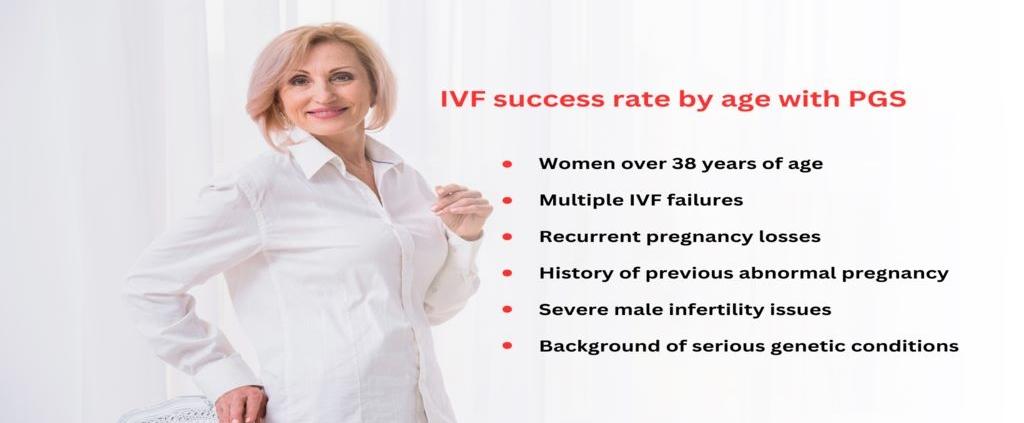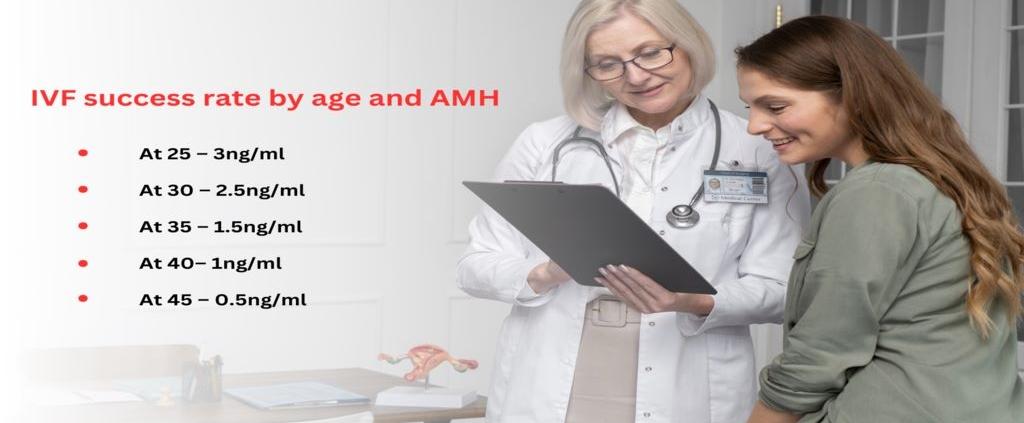Male Infertility: Symptoms, Cause, Diagnosis & Treatment
Male infertility is more prevalent than one might think. We are used to seeing women as the ones with issues, but the contribution of men toward infertility is almost equal.
Fertility in men revolves around three primary parameters, namely sperm count, sperm motility, and sperm morphology. When, for some reason, any of the parameters mentioned above is altered, it results in male infertility.
What is Male Infertility?
Male infertility is when a man cannot help his female partner conceive after having sexual intercourse without contraception for 12 months or more.
Statistical Data for Male Infertility
Scientists have stated that infertility in men has witnessed a drastic increase during the past few decades owing to numerous factors.
According to the data put forward by the Indian Society of Assisted Reproduction (ISAR), around 10-14% of Indian couples are affected by infertility issues.
Data shows that one-third of cases of infertility are due to females, one-third to males, and one-third to both males and females.
Infertility is more prevalent in metropolitan cities where people are more exposed to risk factors that pave the way to problems in conceiving.
Understanding the causes and risk factors of infertility in men is essential.
Causes of Male Infertility
Infertility in men is caused due to altered semen parameters, including sperm count, sperm motility, and sperm morphology.
Sperm Count-:
A normal or healthy sperm count means the sperm concentration is more than 15 million sperm/ml of the semen sample. If your sperm count is less than 15 million/ml, it may cause problems in conceiving.
Sperm Motility-:
In simple terms, we can say sperm motility is the ability of the sperm to swim toward the egg for fertilisation. Normal sperm motility is considered to be around 40%.
The number 40% signifies that out of the total sperm produced, 40% are efficient enough to swim through the uterus and reach the egg.
Sperm Morphology-:
Sperm morphology is defined as the shape and size of a sperm cell. If there is a problem with the shape or size of the head, midpiece, or tail of the sperm, it may lead to infertility.
Male infertility is associated with many hormonal, physical, psychological, and behavioural problems and risk factors. The causes of male infertility are stated below:
Hormonal imbalance-:
- Hormonal balance is vital for the healthy upkeep of the body. However, if the balance is disturbed, this may affect the normal functioning of the thyroid, hypothalamus, adrenal, and pituitary glands. This imbalance can lead to complications in conceiving.
Genetic dysfunction-
- Kallmann’s disorder, Kartegener’s disorder, Klinefelter disorder, and cystic fibrosis are commonly witnessed genetic conditions that can lead to infertility in men. Genetic dysfunction accounts for 10-15% of cases of low sperm count.
Varicocele-:
- The production of sperm by the testicles is a temperature-dependent process. If the temperature becomes high, sperm production reduces.
The scrotum is that part of the male reproductive system responsible for maintaining the ideal temperature in the testicles. But when the vein in the scrotum gets enlarged, blood flow to the testicles increases, and sperm production decreases. This medical condition is termed scrotal varicose veins or varicocele.
Infections-:
Sexually transmitted diseases and inflammatory bacterial infections can lead to scars that may negatively impact sperm production.
Previous Surgeries-:
Surgeries of the male reproductive system, like the bladder, testicles, scrotum, or the organs surrounding it, like the stomach, hernia, abdominal region, prostate, and rectum, can hamper sperm production and fertility.
Excessive Drinking and Smoking-:
Alcohol and tobacco affect sperm motility. Excessive consumption of alcohol and smoking results in defective sperm, poor sexual performance, and deteriorated testosterone levels. However, controlled intake of alcohol and tobacco doesn’t contribute to infertility in men.
Spinal Cord Injury-:
Any injury in or around the spinal cord can lead to infertility issues in men.
Retrograde Ejaculation-:
Normal ejaculation occurs when the semen darts through the penis. But in some cases, the semen enters the bladder instead of flowing out through the penis. This medical abnormality is known as retrograde ejaculation and significantly affects fertility in men.
Testicular Cancer-:
Testicular cancers and even non-malignant tumours adversely affect male fertility.
Trauma-:
An injury, surgery, or bacterial infection can cause testicular trauma. An immune response is triggered in the testes that results in sperm damage.
Hemochromatosis-:
Haemochromatosis is a medical abnormality in which iron is deposited in the testes.
Drugs and Steroids-:
Drug intake and supplementation have been linked directly to decreased sperm count.
Obesity-:
Obesity also contributes to male infertility.
Excessive Exercise-:
Exercise helps boost your reproductive health, but excessive exercise is seen to decrease testosterone levels.
Stressful Regime-:
A stressful regime increases your body’s production of stress hormones. This overproduction of stress hormones adversely affects the production of testosterone and other hormones responsible for sperm production.
Symptoms of Male Infertility
Well, a majority of the time, male infertility may go asymptomatic. However, there are cases where men witness evident male infertility symptoms that may warrant a medical checkup, including:
- Inability to ejaculate
- Decrease in volume of seminal fluid
- Infected semen (coloured semen)
- Pain or swelling around the genital area
- Poor sex drive or reduced sexual desire
- Erectile dysfunction
- Abnormal increase in breast size
- Evident reduction in facial and body hair
Diagnosis of Male Infertility
The diagnosis begins with male fertility tests from an advanced laboratory. The second step is to repeat the test from a different laboratory. If both times the results highlight a problem, seek medical guidance.
Infertility Tests for Males
Conducted to identify the root cause of infertility:
- Semen analysis
- Hormone testing
- Ultrasound – TRUS
- Scrotal Doppler
- Genetic testing
- Testicular biopsy
You can successfully treat male infertility based on the cause and duration of infertility. There’s no need to worry endlessly about infertility test reports. You can use various surgical procedures to help you welcome a healthy baby.
Surgical Treatment for Male Infertility
Depending on the test reports and cause, male infertility treatment takes into account various reconstructive procedures to restore fertility in males:
- Varicocele surgery
- Vasovasostomy
- Vasoepididymostomy
- Trans-urethral resection of the ejaculatory duct
In some infertility cases, surgeries are not required. Medications and lifestyle changes can help bring positive results that boost male fertility.
Surgical Procedure to Help Conceive-:
● IVF-: In vitro fertilisation treatment may help conception as fertilisation occurs in a laboratory under controlled conditions. Good quality sperm are detected and stored, and then fused with the egg. This fertilised egg gets implanted into the uterus of your female partner.
● ICSI-: Another ART is the ICSI treatment, which stands for intracytoplasmic sperm injection. The best part about ICSI is that only one sperm is required to carry out the treatment. This single sperm is injected directly into the uterus, fusing with the egg and leading to pregnancy.
● Donor Sperm Insemination-If nothing improves sperm health, you may opt for donor sperm insemination. During donor sperm insemination, a male with good sperm count, motility, and morphology is used. His sperm is collected and stored. Then this sperm is fused with the egg using ART, resulting in pregnancy.
Sperm Harvesting Procedures
For IVF and ICSI, sperm for fertilisation with the eggs are harvested side by side from the male using the following sperm harvesting procedures:
- Testicular Sperm Aspiration (TESA)
- Percutaneous Epididymal Sperm Aspiration (PESA)
- Testicular Sperm Extraction (TESE)
- Micro Epididymal Sperm Aspiration (MESA)
- Microdissection TESE (microTESE)
Conclusion
Male infertility has become as common as female infertility. Data cement that fertility issues due to men are equal to those due to women. But the good news is like female infertility issues, male infertility is also treatable. You need to consult an experienced urologist who can diagnose and guide you. Also, ensure you undergo treatment from a highly trusted fertility centre like Imprimis IVF, Srinagar.
Imprimis IVF Centre Branches: –
Best IVF Centre in Bhubaneswar





